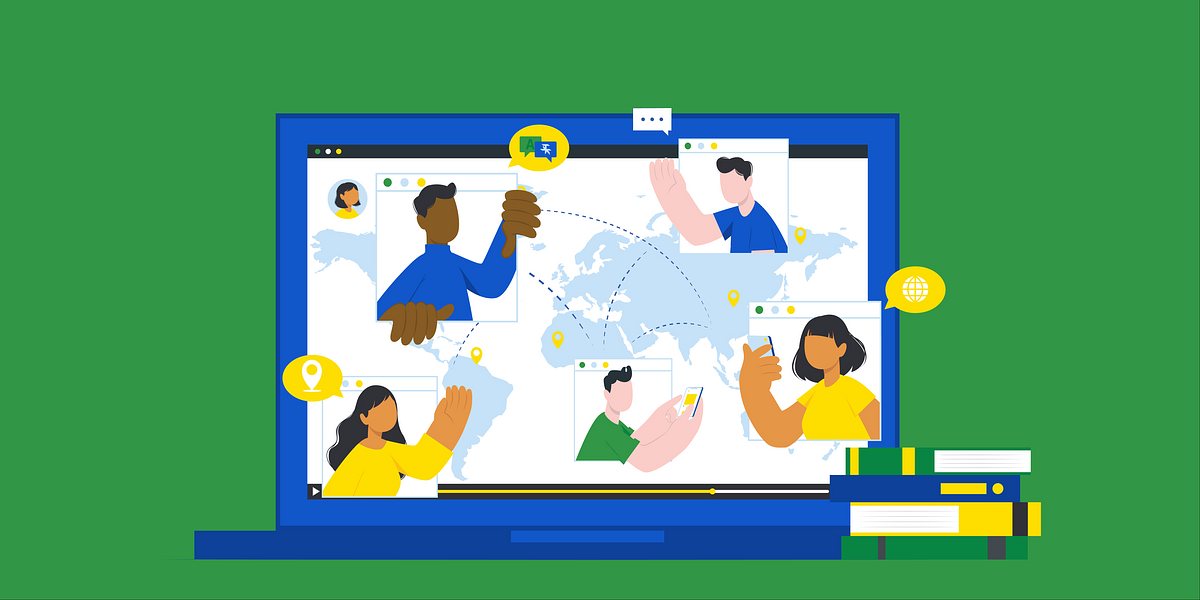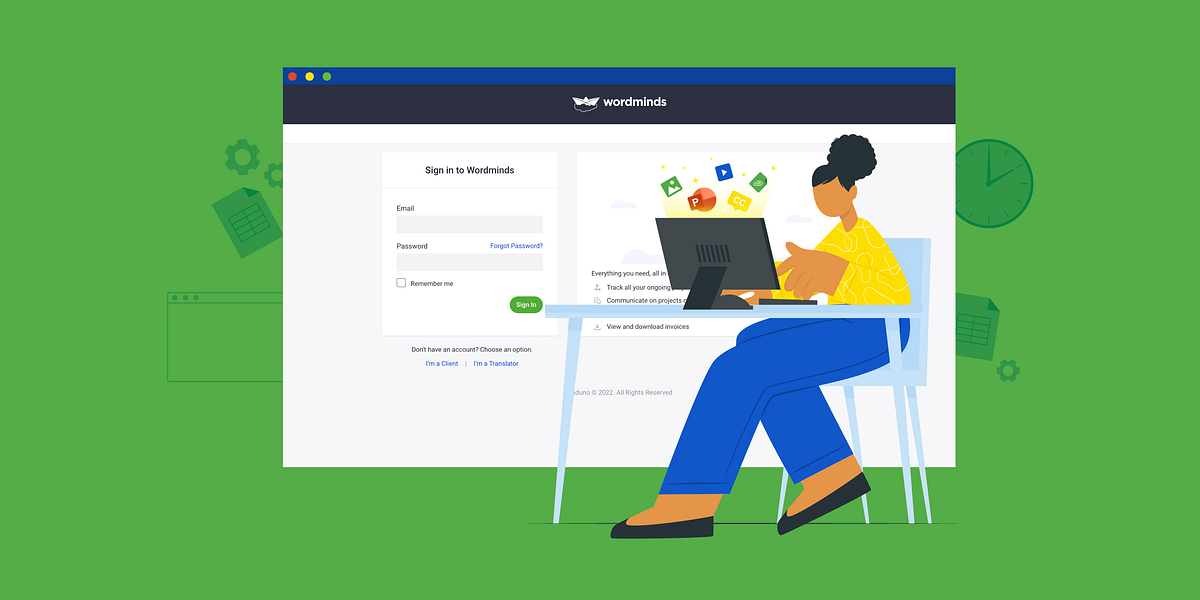
How to create an effective global e-learning framework
Imagine you need to conduct regular onboarding sessions about your company – its culture, policies, product training, sales training, project management, leadership and workplace safety – running them smoothly across all your global divisions while respecting the end goal of improving your employee performance.
This issue may not have been so critical pre-pandemic, but today, when the entire corporate world has migrated to working from home offices, study rooms, bedrooms and kitchens, it is more prominent than ever. Remote working has become the new norm and has added to the turmoil which already existed of teams scattered across the globe, speaking different languages and living different work experiences.
So how do you provide consistent training for employees who are not in the office and, taking it one step further, for employees sitting in offices and locations which may be on the other side of the world? Different working conditions, cultural backgrounds and business mindsets all create unique challenges waiting to be addressed by global eLearning. You have an international organisation to onboard, train and develop, so where do you start?
1. Research the target audience
You have global teams of experts operating in different parts of the globe, having various roles and varying degrees of knowledge and experience. They all have different learning needs, different learning patterns and different professional goals to achieve, but the reason they are in the student seat is the same – to perform better and progress in their careers.
Building an efficient framework that will be sustainable across multiple countries, languages and cultures is no small feat, so start with what is most important - the learning goals. Analysing these in detail will help you identify how the solution you want to build can be adapted to have maximum relevance for each role, level and language.
Start by working closely with team leaders and department directors across all regions and countries, and you will learn how the same roles can have a unique set of challenges or specific training needs which you can help overcome, thus improving synergies on a global level.
The most obvious examples of this are the cultural differences and differences in mindset between East and West. While there may still be roles, responsibilities and hierarchy, cultural nuances may create tensions or blocks in communication across multinational teams. You can alleviate these by adding a cultural layer to your standard topic training programme.
2. Build training programmes in modules
Building programmes in modules is generally good practice and a great principle to use when planning and implementing training. Think in terms of building blocks that you can mix, match and reuse for various cross-topic programmes.
It all starts with creating master templates for key topics, building them in chapters which you can adapt to various departmental needs or levels of hierarchy. These modules and blocks can be easily adapted, translated and localised to use in other regions and countries. If a programme developed by HQ is not so useful for a local team, you can keep the modules that work and let local training teams rework and adapt the rest. The main benefit is that you keep the process under the HQ umbrella and allow the creation of local in-house solutions that are aligned with the general company training direction. It also helps you better manage global and local budgets, strategy consistency and lead times for training course delivery.
Another benefit is that the module variant will serve you best when building cross-functional training programmes. Some training modules, such as company culture, company values, code of conduct or various internal policies, are used globally across all roles and countries, while some of the modules are more department- or role-specific. Here, the mix-and-match approach will work best without the need to create everything from scratch.
3. Use multimedia for higher engagement levels and better results
An image or a video captures our attention more than a thousand words. Use these to increase engagement among your trainees and improve the assimilation of conceptual information. While the use of videos was already on the rise pre-pandemic, the pandemic itself has accelerated the use of video and interactivity to compensate for the lack of physical interaction. And it’s so true! The rate of engagement with videos is much higher, and if you add an element of entertainment and humour, people are sure to remember it.
Yet be mindful about their use. Using images in a multinational setting involves applying a cultural layer when choosing them. With videos, it may be even more complex, since videos can and should be adapted both to the culture and language they are addressing. Adding subtitles is a minimum requirement, while voiceover or dubbing would be a best-case solution.
Another aspect to consider – images and videos should be carefully selected for their connection with the trainee, as being representative of their role and level within the company (or the role they are soon to fulfil) as much as their country/culture/ethnicity, while promoting diversity and inclusion. This is very important – the higher the degree of association with the visual representation, the higher the level of engagement.
Disclaimer: We recommend being mindful of cultural specifics - images and videos should be culture-aware and culture-sensitive (e.g. casual versus formal tone of voice, images depicting friendly/buddy-style relationships versus more formal, etc).
4. Choose an LMS that is translatable and has modules
If the lack of understanding of the language stands between the trainee and your learning and development programme, make sure you eliminate this barrier to increase knowledge take-up across all international teams. This means that the ease of the translation process should be an important part of programme localisation.
Choose an LMS (language management system) which is effortlessly manageable from the translation point of view. In a nutshell, you should be able to easily export learning content in a specialised format, send it to your translation provider, receive translated files back, upload, review and then be good to go live. In reality, there are more details to take care of, but content import/export is a large part of the process, and you don't want to spend time on repetitive error-prone manual tasks that take too much time and effort. This means that your LMS should have translation settings as part of its core functionality.
And regarding modules: as described in point 2, if you want to achieve efficiency, think of building blocks that can serve multiple training needs, and can be reused and adapted as needed. Opt for an LMS that will allow you to do this.
5. Choose an experienced translation partner
Once you establish the importance of LMS content translation, you should focus on choosing a translation partner who will help you deliver accurate multilingual translation, smoothly and on time. Make sure you choose a vendor who:
- works with your LMS of choice and/or can work with your LMS format. SCORM format is one of the most popular;
- has a technical team that can format and adapt content to a restricted environment (slide). This is a large part of the task. For example, consider how Spanish is usually 20% longer than English, or Chinese and Arabic involve completely different scripts. Technical skills go hand in hand with linguistic skills to ensure that text display is correct and makes sense;
- has multidisciplinary subject-matter expertise in your industry or field. You may be creating safety training for plant workers and product training for your commercial department, so the learning modules will need to cater to your industry and reflect your terminology;
- works across multiple time zones and can ensure prompt communication and daytime deliveries for all your global offices equally, whether they’re in Beijing, Berlin or Seattle.
Choose your translation with consideration and care.
Creating an effective global eLearning framework which is sustainable across multiple countries, languages and cultures may sound difficult. But if you make sure to take into account all the above-mentioned steps and align them with your multilingual training and development strategy, you will be amazed by the results you can achieve.
Need some help to develop and localise your eLearning content? Talk to Wordminds about your next steps for achieving maximum global employee engagement.
About Wordminds
Wordminds is a close-knit team of language experts – professional translators, project managers, localisation engineers and business visionaries who work closely with global clients, helping them connect with their international audience. Wordminds works with over 3,000 language specialists and subject-matter experts to enable companies to overcome cultural and language barriers, helping them build trust and create long-lasting business and human relationships. Fully certified under ISO 9001 and ISO 17100, the company believes in continuous improvement and so stands at the forefront of new language-technology implementation, smart collaboration and excellent customer service. Find out more about Wordminds.
Join our Newsletter
Stay up to date with the latest articles, news and translation insights


